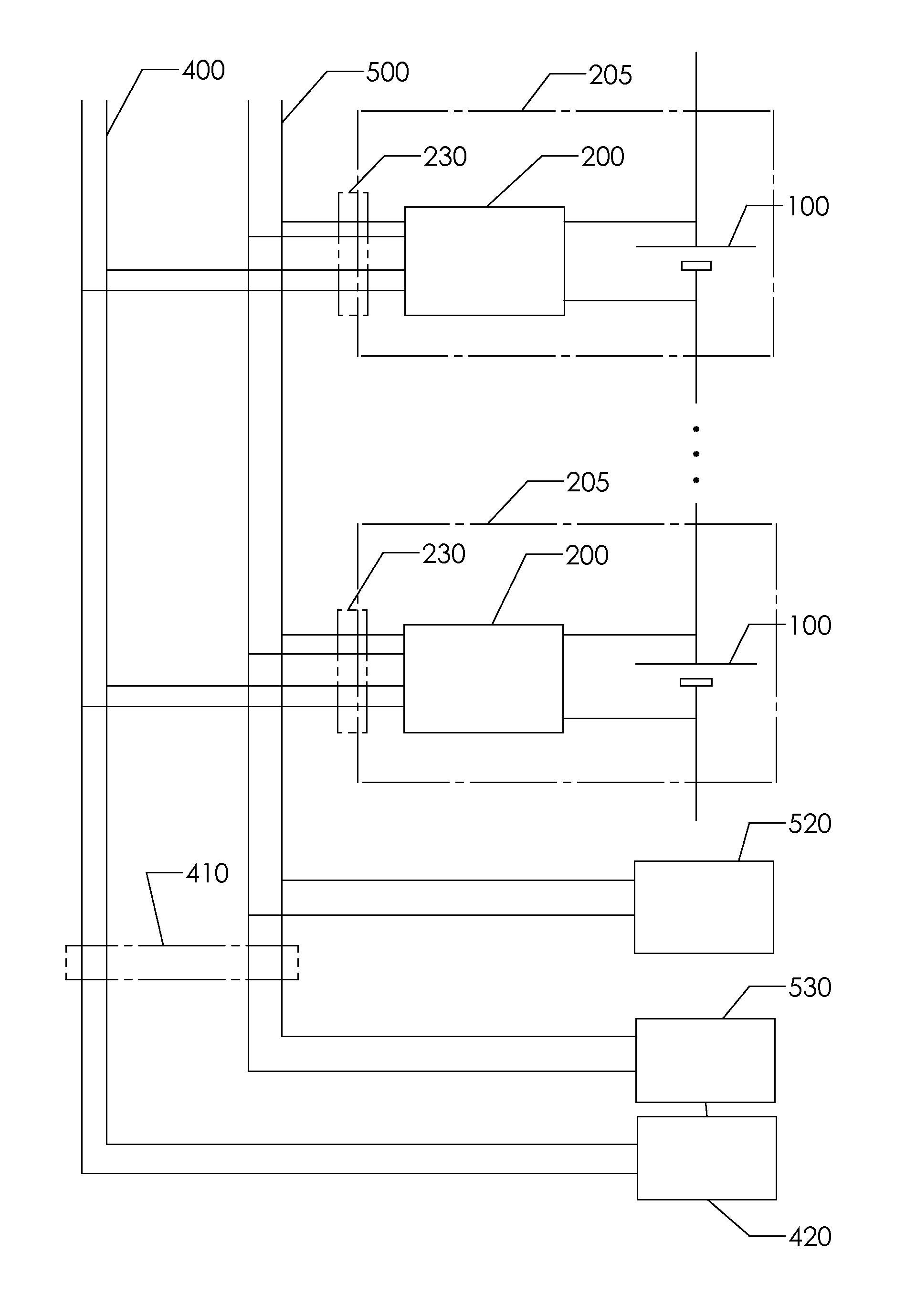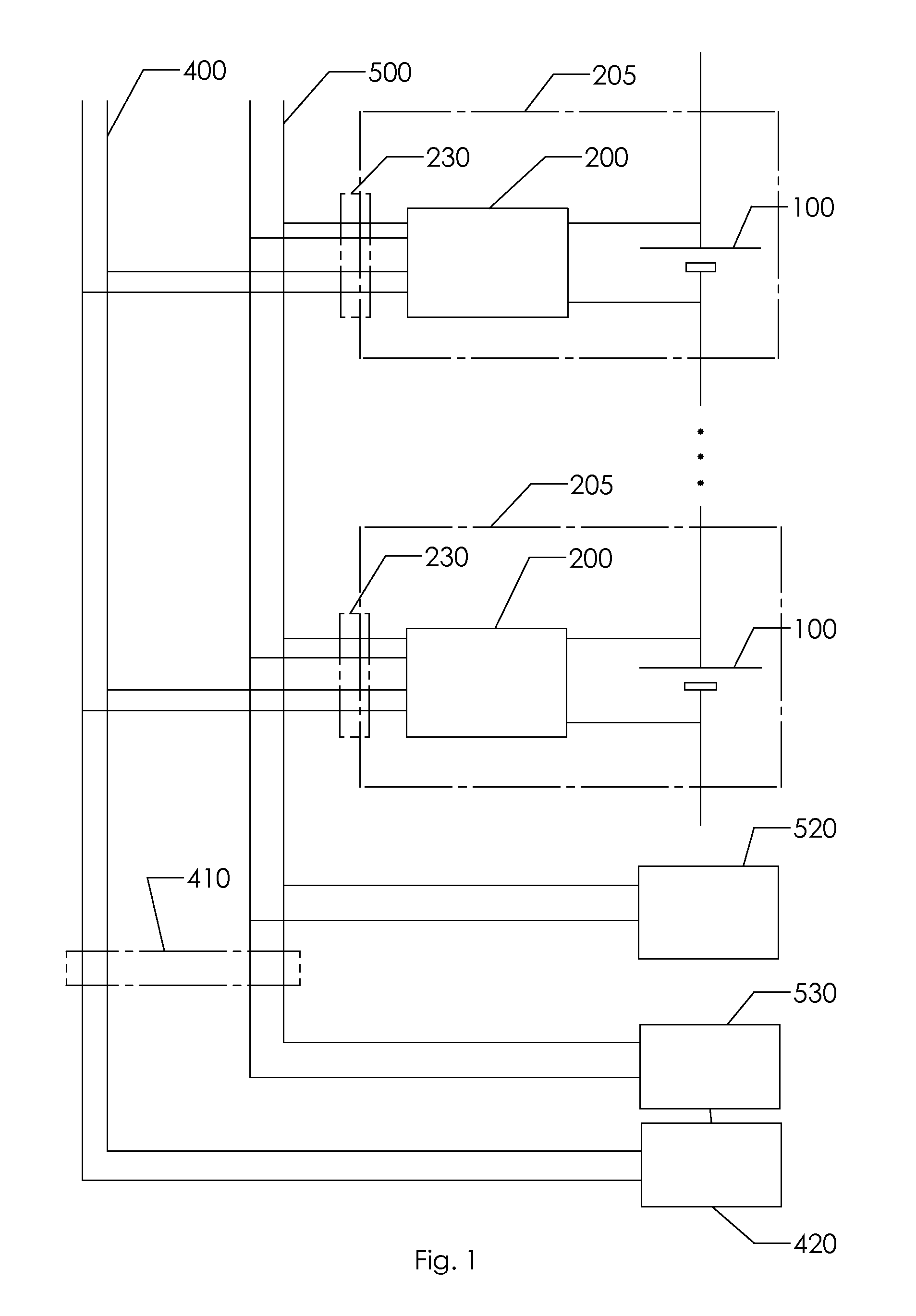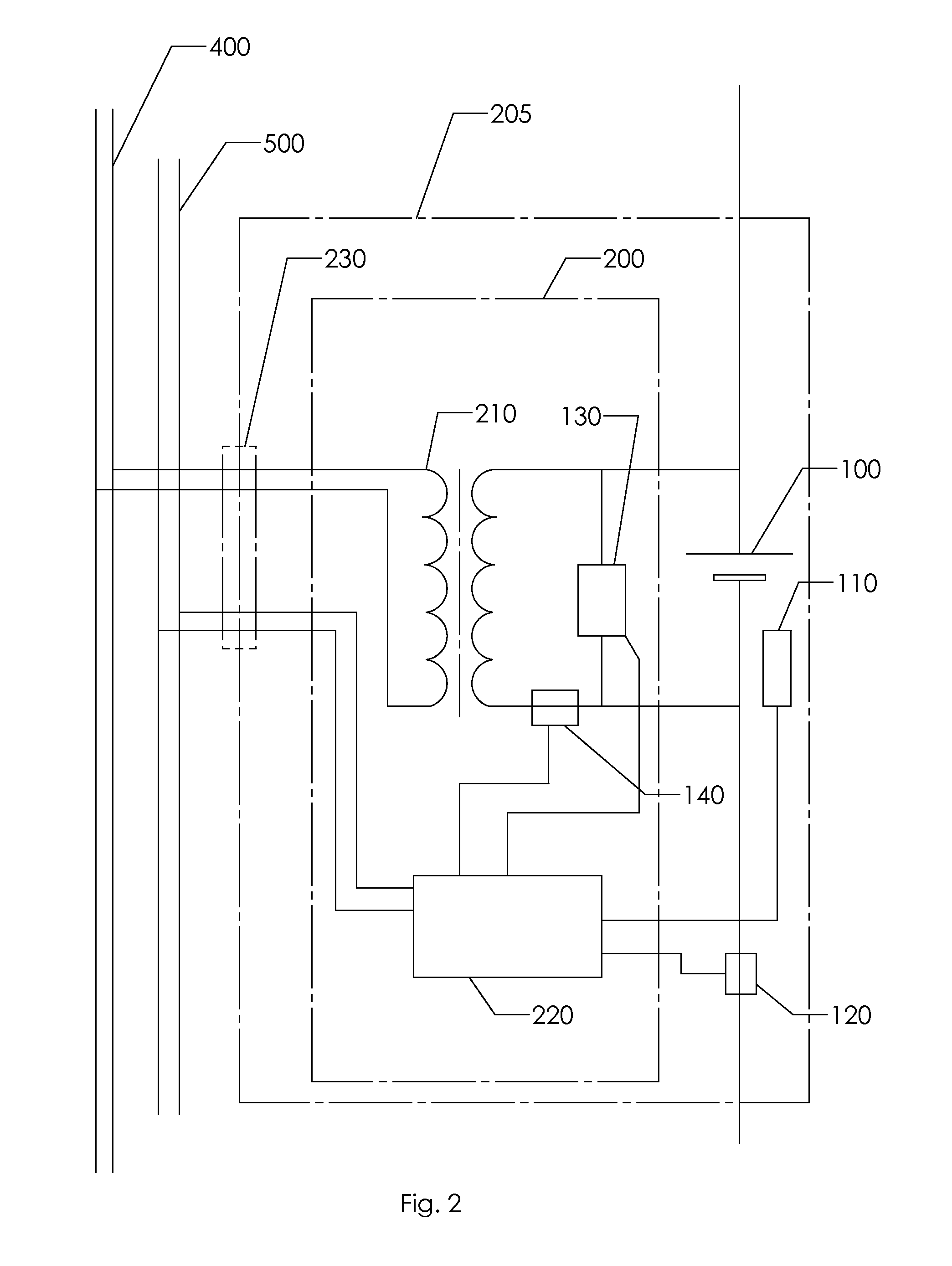Modular Charging System for Multi-Cell Series-Connected Battery Packs
a charging system and battery pack technology, applied in battery data exchange, charging and exchanging data chargers, transportation and packaging, etc., can solve problems such as hazardous conditions, large under-charged entire packs, and problems such as rapid mass production, to achieve favorable economies of scale and easy mass production
- Summary
- Abstract
- Description
- Claims
- Application Information
AI Technical Summary
Benefits of technology
Problems solved by technology
Method used
Image
Examples
Embodiment Construction
[0018]A representative embodiment of the present invention is illustrated schematically in FIG. 1. A plurality of battery cells 100 are connected in series. Each of the cells 100 is electrically coupled to a corresponding charging module 200, together forming battery module assemblies 205. Each battery module assembly 205 is coupled to the input power bus 400 by means of a connector interface 230. Additionally, modules 205 may interface to a communications bus 500. This communications bus interface may be either by means of additional pins in the physical connector 230, as illustrated, or by any other known means including wireless connections such as Zigbee or BlueTooth. FIG. 1 further shows the power source 420 connected to the power input bus 400 by means of connector interface 410. Numerous embodiments of connector interfaces are known in the art and need not be discussed in detail herein. In most embodiments the power source 420 is a utility power grid supplying single-phase or...
PUM
 Login to View More
Login to View More Abstract
Description
Claims
Application Information
 Login to View More
Login to View More - R&D
- Intellectual Property
- Life Sciences
- Materials
- Tech Scout
- Unparalleled Data Quality
- Higher Quality Content
- 60% Fewer Hallucinations
Browse by: Latest US Patents, China's latest patents, Technical Efficacy Thesaurus, Application Domain, Technology Topic, Popular Technical Reports.
© 2025 PatSnap. All rights reserved.Legal|Privacy policy|Modern Slavery Act Transparency Statement|Sitemap|About US| Contact US: help@patsnap.com



